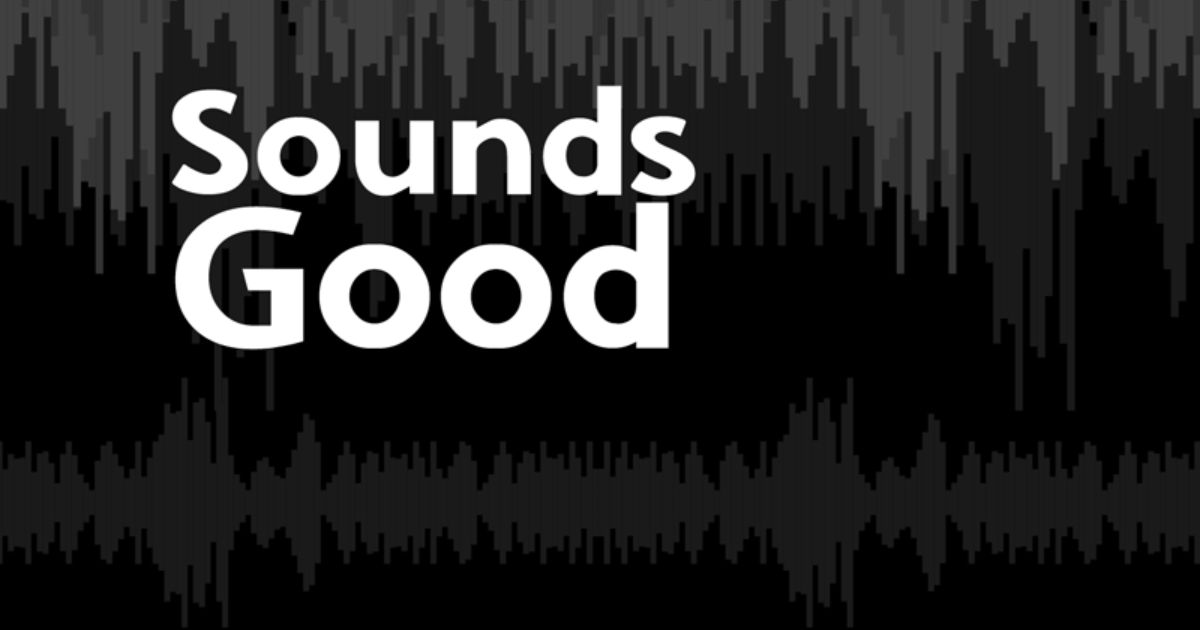Ever heard someone say “Sounds Good” and wondered if there’s a more exciting way to agree? Saying “Sounds Good” is one of the easiest ways to show you like an idea or plan. It’s quick, friendly, and perfect for everyday chats with friends, family, or coworkers. But what if you want to add a bit more spark to your response?
Mixing up how you say “Sounds Good” can make your conversations more lively and clear. Whether you’re chatting casually or speaking in a professional setting, knowing different ways to express agreement boosts your communication skills. Plus, it helps you connect better and sound more confident. Ready to learn fresh, fun alternatives to “Sounds Good”? Let’s dive in!
Other Ways to Say “Sounds Good”
Here are some other ways to say “Sounds good” that fit different situations. You can say “That works for me” in professional settings to show approval politely. In casual talks, try “I’m down with that” or “Count me in!” to express enthusiasm and readiness to join the plan.
Expression of consent
When you want to say “Sounds good” but with more clarity, try expressions that clearly show your consent. Phrases like “You have my green light” or “I’m on board” communicate your agreement and readiness to proceed. These alternatives to “Sounds good” work well in both casual and professional settings, making your response sound confident and supportive.
1. Count me in!
Example:
A: “We’re planning a family vacation next month. Are you joining?”
B: “Absolutely, count me in!”
Meaning: This phrase expresses enthusiasm and readiness to participate in the proposed plan or activity. It shows a positive response and eagerness to be involved.
Usage: Ideal for informal or casual settings, such as conversations with friends, family members, or colleagues. It’s great for confirming participation in activities like a weekend plan, lunch, or a getaway.
2. I’m all for it!
Example:
A: “How about we try the new restaurant for our next meeting?”
B: “I’m all for it!”
Meaning: This phrase indicates strong approval and support for an idea or suggestion. It reflects agreement and a positive opinion toward the proposal.
Usage: Suitable in both informal and professional settings. Use it during discussions or campaign planning, showing enthusiasm and cooperation in workplace or casual conversations.
3. That works for me.
Example:
A: “Can we schedule the coffee meeting at 3 PM?”
B: “That works for me.”
Meaning: This phrase communicates acceptance and readiness to proceed with a suggested plan or time. It expresses a flexible and agreeable tone.
Usage: Perfect for formal or professional settings like meetings or proposal discussions, as well as casual interactions involving planning or coordination.
4. I’m down with that.
Example:
A: “Let’s organize an escape room activity for the team-building event.”
B: “I’m down with that!”
Meaning: This phrase shows enthusiastic agreement and willingness to participate. It conveys a friendly and informal expression of consent.
Usage: Best used in informal or casual settings among colleagues or friends, especially when discussing fun activities or weekend plans.
Read More: 12 Other Ways to Say “I’m Happy for You”
5. Sounds like a winner!
Example:
A: “We could launch a new marketing campaign next quarter.”
B: “Sounds like a winner!”
Meaning: This phrase expresses excitement and a positive opinion about an idea or proposal. It indicates confidence and approval.
Usage: Suitable in professional or formal settings, particularly in discussions related to projects, campaign planning, or workplace cooperation.
6. I’m with you on that.
Example:
A: “We need to improve communication skills across the team.”
B: “I’m with you on that.”
Meaning: This phrase signals agreement and alignment with someone’s opinion or suggestion. It reflects respect and shared sentiment.
Usage: Appropriate for professional or casual settings. It helps strengthen connection and cooperation during workplace or informal conversations.
7. That’s a go for me.
Example:
A: “Shall we book the tickets for the movie night?”
B: “That’s a go for me.”
Meaning: This phrase confirms approval and readiness to proceed with a proposed plan. It’s an affirmative answer showing excitement and willingness.
Usage: Can be used in both formal and informal settings such as discussions about plans with family members, friends, or colleagues.
Affirmative answers
If you want to give an affirmative answer instead of just saying “Sounds good,” you can use phrases like “Count me in,” “I’m all for it,” or “That’s a go for me.” These responses clearly show your approval and willingness to participate in the plan or idea. Using such alternatives to “Sounds good” adds enthusiasm and makes your communication more engaging in both informal and formal conversations.
8. Let’s do it!
Example:
A: “How about we try that new ice cream place after work?”
B: “Let’s do it!”
Meaning: This phrase shows eagerness and excitement to start or join an activity right away. It expresses readiness and enthusiasm.
Usage: Perfect for informal or casual settings, especially when making spontaneous plans with friends, family members, or colleagues.
9. Sounds like a plan!
Example:
A: “We’ll meet at the restaurant at 7 PM for dinner.”
B: “Sounds like a plan!”
Meaning: This phrase means you agree with the suggested plan and find it appealing. It shows support and readiness to proceed.
Usage: Great for informal, casual, or professional settings where you want to affirm a proposal or suggestion during meetings or social gatherings.
10. You have my green light.
Example:
A: “Can we proceed with the marketing campaign next week?”
B: “You have my green light.”
Meaning: This phrase expresses formal approval or permission to move forward with a proposal or idea. It is a clear expression of consent.
Usage: Best suited for professional or formal settings, like workplace discussions, campaign planning, or proposal approval.
11. I’m on board.
Example:
A: “We’re launching a new project next month. Are you joining the team?”
B: “I’m on board.”
Meaning: This phrase shows agreement and willingness to participate or cooperate in a plan or idea. It conveys enthusiasm and readiness.
Usage: Ideal for both formal and informal settings, especially in workplace meetings, teamwork discussions, or casual planning.
12. I’m game.
Example:
A: “How about a book club meeting this weekend?”
B: “I’m game!”
Meaning: This phrase means you’re willing and excited to join in an activity or plan. It’s a casual expression of consent and enthusiasm.
Usage: Best used in informal or casual settings with friends, family members, or colleagues when discussing activities or events.
13. Sounds enticing!
Example:
A: “We’re thinking about a weekend getaway to the mountains.”
B: “Sounds enticing!”
Meaning: This phrase expresses attraction and interest toward an idea or suggestion. It shows positive sentiment and excitement.
Usage: Suitable in informal, casual, or professional conversations when reacting to appealing proposals or plans.
14. I’m all ears.
Example:
A: “I have a new idea for improving communication in the workplace.”
B: “I’m all ears.”
Meaning: This phrase means you’re ready and eager to listen carefully. It shows active participation and interest in a discussion.
Usage: Works well in professional or informal settings during meetings, conversations, or brainstorming sessions.
15. That resonates with me.
Example:
A: “It’s important we show respect and professionalism in every interaction.”
B: “That resonates with me.”
Meaning: This phrase indicates strong agreement or connection with an opinion or sentiment. It expresses shared values or understanding.
Usage: Best for formal or professional settings, especially during discussions about workplace culture, communication skills, or moral values.
Tailoring Your Response to the Situation
Depending on the situation and the person you’re conversing with, tailoring your response helps you express the right tone and sentiment clearly and effectively. Choosing the appropriate phrase shows your communication skills and respects cultural nuances, which is key in both personal and professional interactions.
Casual Conversations: When chatting with friends, family members, or colleagues in informal settings like lunch or a weekend plan, informal expressions work best. Saying things like “I’m down with that!” or “Count me in!” adds warmth, camaraderie, and enthusiasm to the conversation. These phrases show your willingness and excitement to participate in the activity or plan. Using casual expressions also strengthens personal connections and makes the interaction feel natural and friendly.
Professional Discussions: In a workplace, meeting, or other formal settings, maintaining professionalism is crucial. Using expressions such as “That works for me” or “I’m on board” communicates your approval and readiness to proceed while keeping the tone respectful. These phrases help maintain cooperation and alignment among colleagues and team members. In professional communication, showing respect through your choice of words fosters trust and smooth collaboration, which is vital for any marketing campaign or project discussion.
Expressing Enthusiasm: Whether in casual or professional contexts, conveying enthusiasm can positively influence the atmosphere. Phrases like “Let’s do it!” or “Sounds like a plan!” demonstrate your excitement and eagerness to move forward. This expression of consent or affirmative answer not only boosts morale but also encourages others to participate actively. Enthusiasm can be contagious, enhancing the overall energy in discussions, campaigns, or social activities like book clubs, movie nights, or an escape room outing.
By matching your vocabulary and tone to the context, you show cultural awareness, good communication skills, and a genuine interest in the conversation. This approach improves interaction, supports mutual understanding, and helps you build stronger relationships in both casual and professional environments.
Conclusion
In conclusion, knowing many ways to say “Sounds Good” helps you speak better. You don’t have to say “Sounds Good” all the time. Using different phrases shows your creativity and makes your talks more fun. Whether you are in a casual setting or a professional setting, you can pick the right way to say “Sounds Good”. This makes your communication clear and shows your enthusiasm.
Also, using other words instead of just “Sounds Good” improves your vocabulary and English skills. It helps you connect with friends, family members, or colleagues. So, next time someone makes a suggestion, don’t just say “Sounds Good” — try something new. Your response will feel fresh, polite, and full of positive energy. Keep practicing, and you’ll enjoy better conversations every time.
FAQ’s
What does Sounds Good mean?
Sounds Good means you agree or approve an idea. It’s a quick way to show you like a plan or suggestion.
When should I use Sounds Good?
Use Sounds Good in casual talks or informal settings. It works well with friends, family, or coworkers to show agreement.
Are there formal alternatives to Sounds Good?
Yes, in professional settings say I’m on board or That works for me instead of Sounds Good. It sounds more respectful and professional.
How can I express enthusiasm instead of Sounds Good?
Try saying Let’s do it or Sounds like a plan. These phrases show excitement beyond just Sounds Good.
Does saying Sounds Good improve communication skills?
Using Sounds Good and its alternatives helps you diversify your vocabulary. It improves your English skills and makes conversations more interesting.

Grammerroot is your trusted source for mastering English grammar and language skills. From simple rules to advanced tips, we help learners build strong foundations through easy-to-understand content. Learn smart, learn right — only at Grammer Root.




